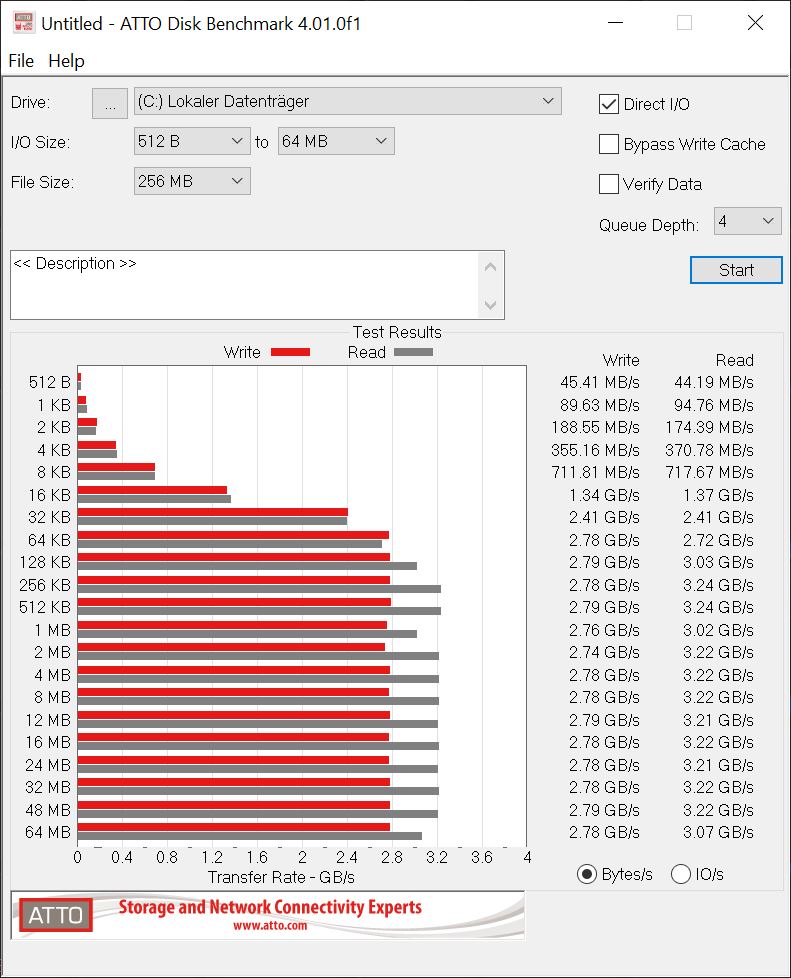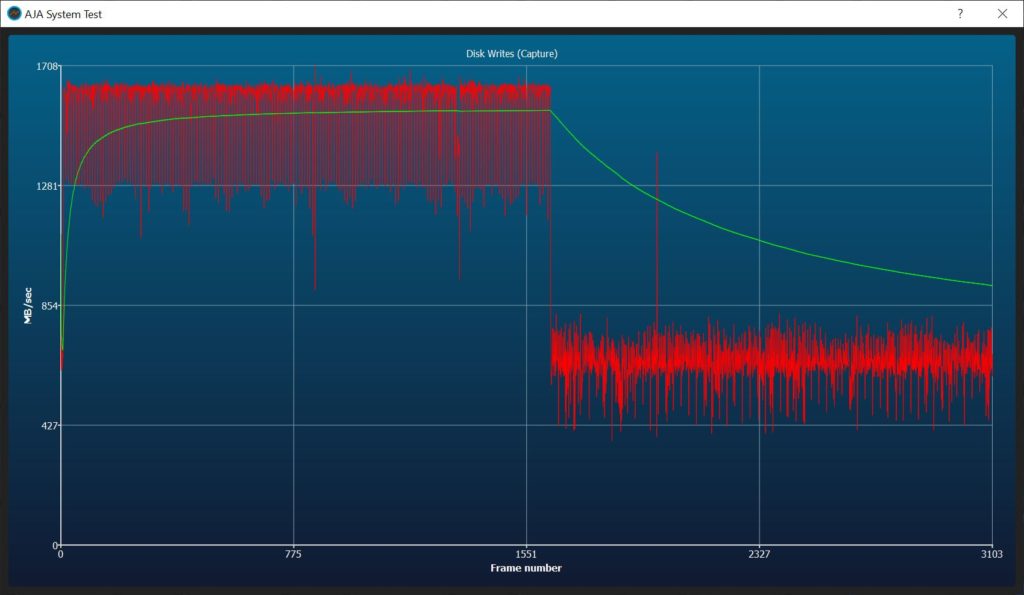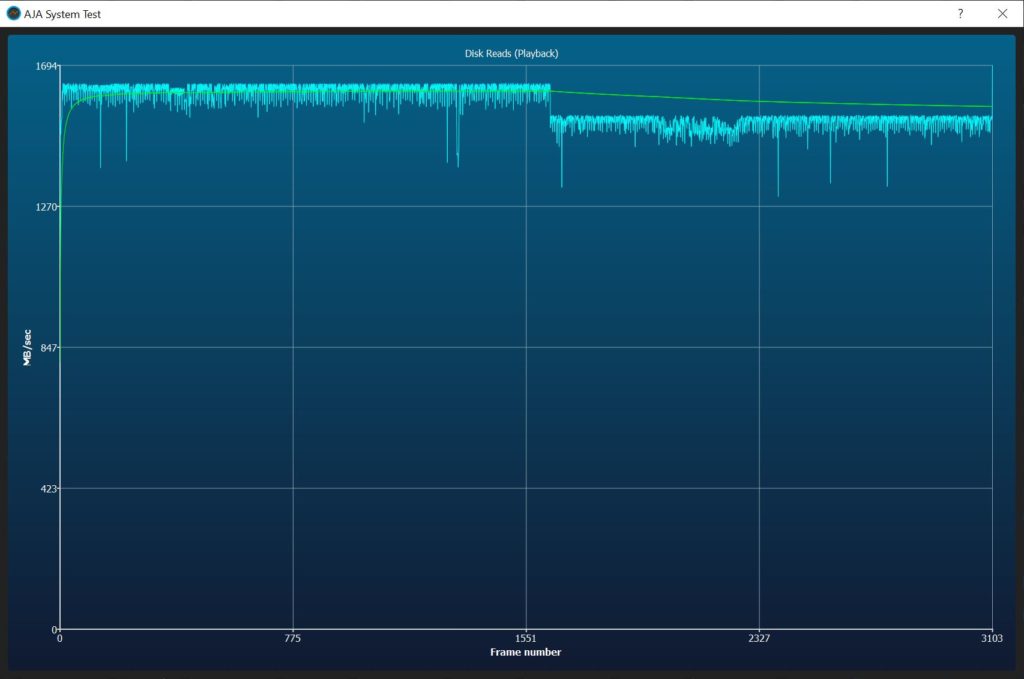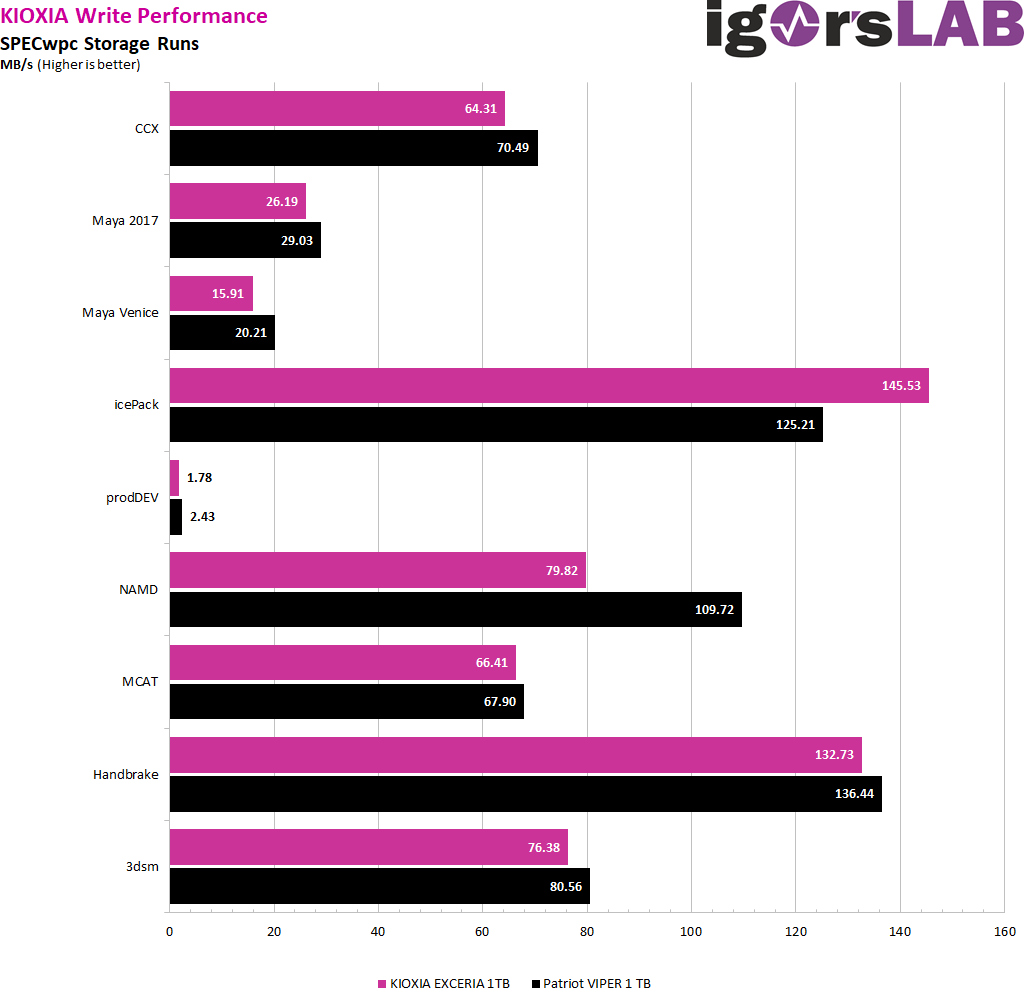In order to obtain comparable results and to better reflect everyday life, I stressed the SSD for a total of 48 hours, thus simulating longer-term use. Random files were written and deleted, whereby the average utilization of the storage space was about …66%, or two-thirds. In the end, this is also the recommendation for such data carriers, which should better not be written completely. Otherwise, there will be real shrinkage.
Benchmarks with CrystalDiskMark and ATTO
For the sake of completeness, I’ll let the two mainstream benchmarks run first, which by the way can confirm the manufacturer’s specifications, even after the stress test and with the 2/3 allocation. What’s interesting here is the fact that the SSD still performs quite well, especially when writing smaller blocks, even if it’s not enough for an absolute top position, of course.
ATTO looks quite similar, with reading and writing of the smaller blocks being approximately equally fast. But here we also use a different algorithm. Nevertheless, both benchmarks do not send the internal SLC cache to the torture chamber, a very unpleasant disadvantage of such synthetic benchmarks, which is why I prefer to take harder measures.
AJA system test – what happens with the SLC cache under real load?
I do admit that writing and reading 64 GB Ultra-HD videos is not exactly part of Kevin-Horst’s everyday life, but the 4K cam in the studio easily manages this. I had already mentioned in the introduction that the pSLC cache takes over the task of implementing 1-bit access, but nobody really knows what the final size of the cache will be. But that is exactly what we want to test now!
The graphic can also be properly enlarged by clicking on it, so that the sudden impact when the SSD of the pSLC cache runs out can be beautifully seen. At approx. 33 GB is the end of the terrain here and the writing process slips off considerably. From the 1600 MB/s on average with pSLC cache, suddenly only about 700 MB/s when the cache is full. The smallest measured value without SLC cache was 371 MB/s, the maximum value with cache was 1708 MB/s.
Thus, the SSD is definitely not suitable for semi-professional or even professional use in the creation sector despite the 1TB, and you can’t expect that in terms of technology and price. However, you only experience the cache break-in when permanently writing huge amounts of data at maximum speed, otherwise not. The test installation of the 120 GB of Call of Duty via my Gigabit Internet did not show any such effects. In this respect, Kevin-Horst Normalzocker will hardly have to fear any disadvantages.
Reading is (almost) constantly fast, although you can also see very clearly here when the cache loses its radiance (please click on the graphic to enlarge it). Same place, but smaller dent. With 1570 MB/s after the cache capitulation, one is quite fast, even if the minimum rate periodically drops to 802 MB/s. The maximum with cache was 1694 MB/s, a still good value for a four-channel controller and TLC with pSLC cache.
By the way, the temperatures are not an issue, because with an average of 47 to maximum 55 °C in the cooled second M.2 slot of the MSI MEG Z390 Godlike you are very well in the race.
Application programs
This brings us to the SPECwpc and the real-world applications it contains. The test is carried out against a Patriot VIPER, also 1 TB in size, and PCIe Generation 3. I’ll do without IOPS and stick to the read and write rates in MB/s instead. For what is generally written here is small but frequent, as can be seen from the low rates. You are far away from the theoretically possible maximum rates and what you can achieve in a constant stream. Let’s first look at the read operations and see that both SSDs are very far apart. Only in 3dsm the controller seems to cope better with the smaller files.
When it comes to writing, the two SSDs are far less apart, although the KIOXIA EXCERIA can certainly be credited with its qualities. With icePack it is even ahead, which is probably due to the high performance when writing very small blocks, with NAMD the exact opposite is the case.
Conclusion and summary
The plan to launch a relatively inexpensive SSD with decent performance values on the market with EXCERIA seems to have worked out to some extent, if one disregards the optimistic EIA of almost 160 Euros and the daily price jumps. However, this SSD, like the cheap RC models from Toshiba back then, weakens a bit in terms of cache and overall performance in real use. You can see once again that the values from real applications are significantly different from synthetic benchmarks or streams.
Here KIOXIA will have to act over the price, because the gap to the comparison SSD from Patriot is not only marginal, but in some places already enormous. This is especially true for reading, where there are real gaps. It will probably not be the flash memory that is used, because other manufacturers also use it. I would rather pin the performance disadvantages on the controller, which hardly seems up to the task. Here KIOXIA must surely still improve.
It’s certainly not the slowest NVMe SSD on the market, but it belongs to the group of the more leisurely walkers, sprints really do look different. This is regrettable, but it cannot be changed. The current availability is also something like that, because except at notebooksbilliger.de you can currently only get the (surely faster) EXCERIA Plus SSDs and the 500 MB version of the normal EXCERIA. Therefore I have to leave the final evaluation open, because without a real street price this SSD cannot really be classified. However, it is too slow for the price that NBB is currently calling.





































Kommentieren